On Philanthropy: Let’s Build a Community Culture of Corporate Philanthropy
 Contributed by AFP SEWI
Contributed by AFP SEWI
Milwaukee Business Journal
January 6, 2017 issue
The secret to expanding corporate philanthropy in Milwaukee? Helping companies learn how to do it right.
That’s Kira Lafond’s insight, and she should know. When Kira became market president and publisher of the Milwaukee Business Journal mid-way through 2016, she vowed to meet with “100 CEOs in 100 days.” Many of those wide-ranging conversations revealed that many companies want to better understand how to give.
Nonprofit development officers might be surprised at the idea that area companies struggle to give away money (they’re only too glad to help, after all!). But that’s part of the problem: Kira found that many companies feel inundated by nonprofit requests. Triaging and vetting requests is only the beginning; there’s also the time investment required to develop philosophies, policies and procedures that would facilitate giving. What causes does our company care about? How does our own mission figure in that question? Who decides what to fund? Should we give money directly, or to shareholders or employees and encourage them to do so? Should we give locally, regionally or worldwide? Should we give in cash, in-kind, or in human capital? How do we judge impact of our giving? And, finally, if managing all this takes too time away from running our business, will we have the resources to give anyway?
Companies often must wrestle with the very question of why to give. Some give because a stronger community is good for business, some to attract and retain talent (especially Millennials), and some simply because it’s “the right thing to do.” Those motivations influence how and where giving happens, complicating issues further.
The solution? “Businesses that have a strong philanthropy model have a responsibility to teach others,” says Kira. The seeds are already there: in her meetings, she learned that the area’s dozen or so top-tier corporate funders meet together annually to share giving techniques and perspectives on community need. “These companies give lots of money, but guiding other companies to join in could be an even greater gift to the community.”
Creating a broad platform for philanthropic learning was the impetus behind the Journal’s first-ever Corporate Citizen event this fall. More than 300 business leaders attended, not just to laud companies that won recognition for their giving but to learn how they do it. Kira expects even more to attend in 2017.
“If our community is going to thrive, it’s going to take the generosity and thought leadership of more than a few individuals and corporations,” she says. “If those with experience help others learn from their success, we’ll be a stronger community in every respect.”
AFP’s monthly column in the Milwaukee Business Journal is edited by Doug Diefenbach, principal of Diefenbach Communications Strategies, a full-service consultancy specializing in philanthropic communications. Please contribute ideas for future articles here.
